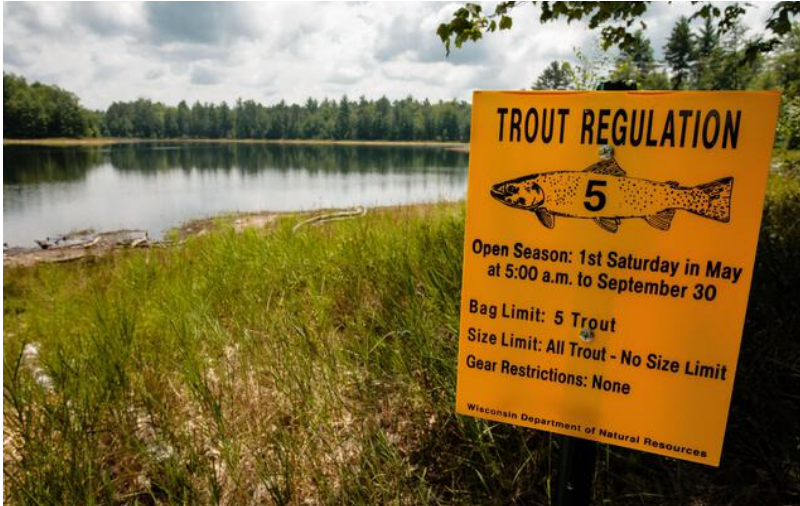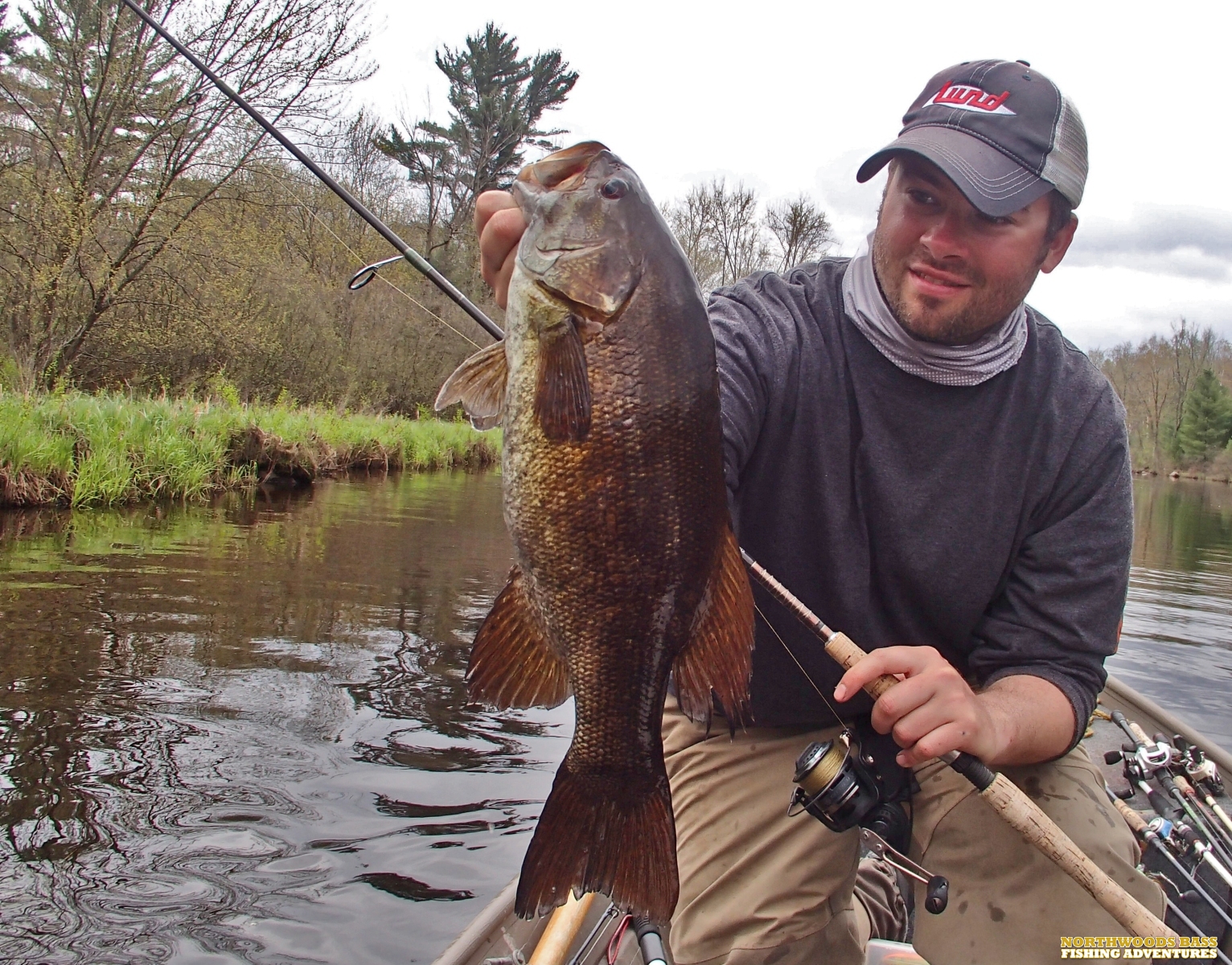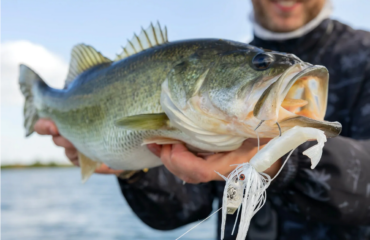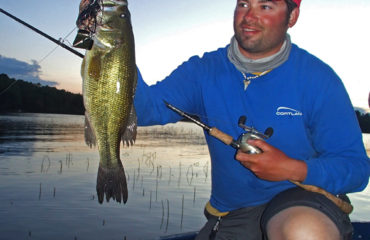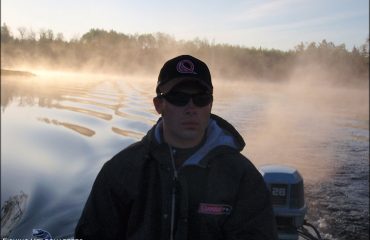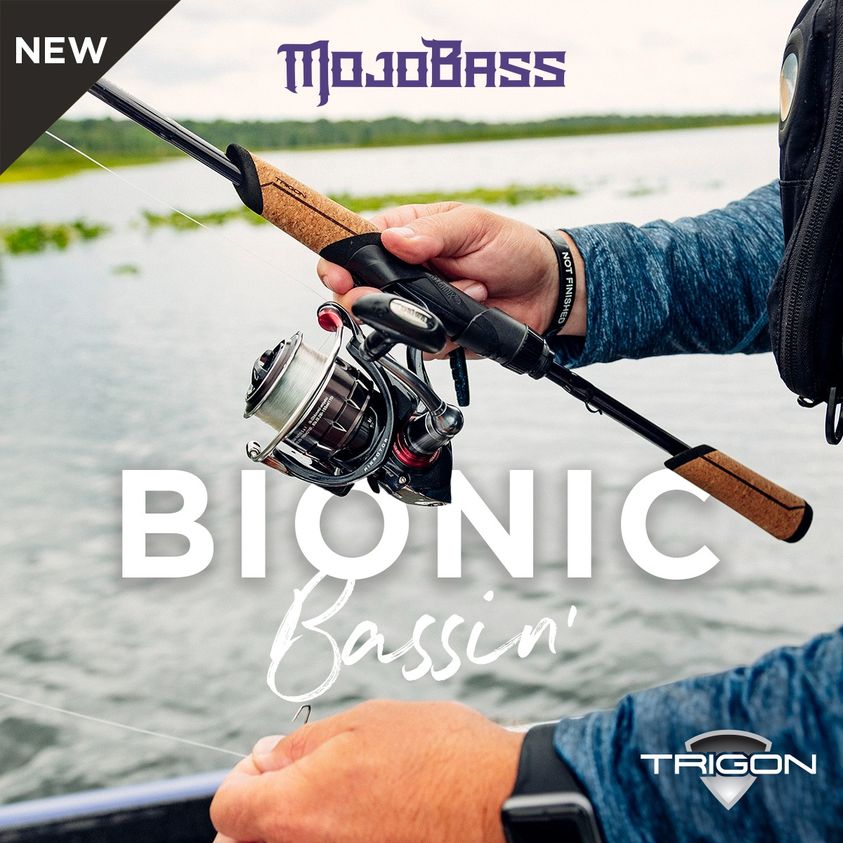Overlooked Bass Waters
Bass fishing is not immune to trends and traffic. Some hold up to pressure and exploitation, while most of them do not. And their fisheries are cyclical as well, peaking and declining as a result of the intense fishing pressure received and its slew of aftershocks – several derbies and tournaments, fish relocation, delayed mortality, harvest, and so-forth. As destination fisheries get most of the media coverage and receive the most participation, many overlooked waters go unnoticed. A good majority of them rarely ever get fished.
So many bass waters get overlooked, seemingly for no good reason. While several locations and destination fisheries throughout the Midwest have earned their reputation for world-class fisheries, many anglers neglect the other waters with the belief they may be inferior and unworthy to fish.
In my experience, the best big bass spots are those that get fished the least and you can access with regularity. These locations are common and nondescript on the map. You just have to look much closer, and be able to find them.
These underrated, overlooked waters are not a be-all and end-all list. They’re just a few of my local Midwestern options available in my fishing regions. Wherever you’re located, I’m sure you have some other similar honey holes that I’ll fail to mention.
Realize that not every fishery is capable of growing and rearing big fish. You just won’t know until you visit and try for yourself.
Small Rivers & Tributaries
Small rivers and streams are the most overlooked and ignored aspects in bass fishing. The best fishing could take place nearby access sites you’ve likely driven over hundreds or thousands of times, or passed by along roadsides. Unless you know of a river rat or two, you might not have ever considered these little gems to be worthy of your time.
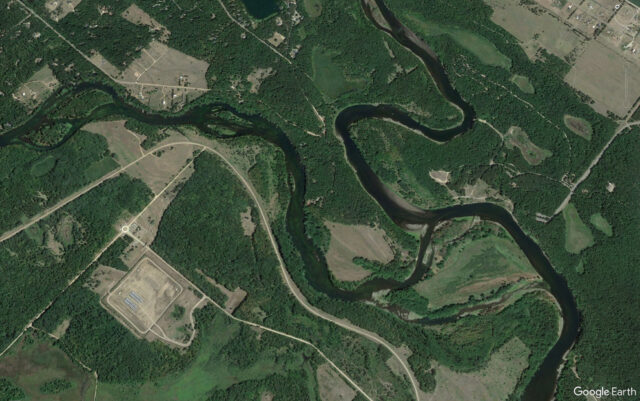
If you’ve always thought small streams are only home to small fish such as minnow species and juvenile gamefish, you are mistaken. To your surprise, many small rivers and creeks containing depth and good water quality hold big fish potential. While small streams have growth and top-end limitations, the potential for big smallmouths becomes exponentially greater if the small stream is a tributary of a larger river system. In these inter-connected waterways, all fish species are known to seasonally migrate back and forth for spawning and feeding, assuming there aren’t barriers such as dams. These streams will be home to seasonal migrant fish and year-round resident fish if deep wintering holes are available.
Few serious bass anglers will ever realize the potential of these little fisheries and the big smallmouth they can hold. While most streams will limit the top end growth of its bass, some of them are capable of producing a trophy fish or two. Because of a small stream’s limitations in fertility and growth rates, many fishermen are completely oblivious of their trophy potential.
The major river systems I fish throughout Wisconsin, Michigan, and Illinois feature a number of smaller tributaries. They’ll provide some of the best and most exciting smallmouth fishing during the spring and summer months.
A few of them are capable of producing some heavyweights, fish to 20-inches and larger. The probability and eventual sustainability of big smallmouths residing in small streams like these fisheries is very high if their flows eventually merge into a much larger river system where most fish can originate from.
Many of the best small streams I’ve fished in urban and remote locations support healthy, productive bass fisheries. Their productiveness has usually been the result of inconvenient location and difficult access, their secretive nature, and lack of popularity and exposure.
Small streams with the biggest smallmouths are those that never get fished and visited by humans. Do your best to protect and preserve their integrity.
Backwaters and Ditches
From shallow sloughs and oxbows winding off of major river systems, to the slop-choked bays and flood plains of lowland flowages, and the ditches and small creeks inletting into drainage lakes, backwaters offer unreachable populations of big largemouths that are least pursued.
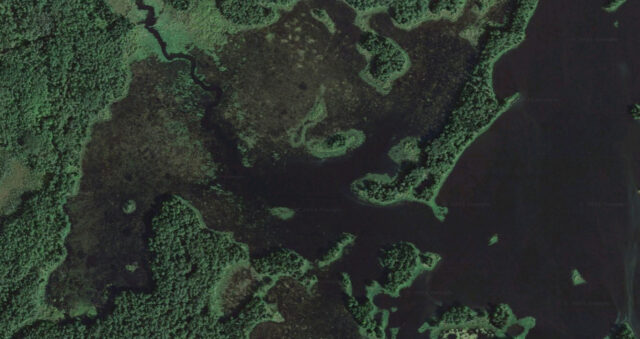
Reaching some of these places can be a hassle for some, but not for me. I’m equipped with 4 boats in various sizes, plus a utility kayak. I’ll do whatever it takes to get back into some of them I’ve discovered.
Whether guiding or leisure fishing, we’re always looking for the best habitat that differs from the rest of the fishery. Across many of the flowages and drainage lake systems of Wisconsin, one of the best explorations and fishing efforts is finding a backwater area that nobody else is fishing.
Spring through summer, backwaters attract and concentrate many largemouths. Their habitats can be thick and rich with diverse emergent and submergent plant species. Another characteristic of them can be the abundance of timber and wood cover, and the element of protection from fishing pressure and the rest of the lake or river system. In high water years, they are home to abundant fish.
The greatest benefit to fishing backwaters is access to unpressured fish. Boat landings don’t get built on swamp land, or in the middle of nowhere. Also, it could take several minutes and hours reaching them by boat from where you launched at. They can be very difficult to access. During drought conditions and low water seasons, they might become unreachable and non-navigable.
The backwaters I seek are far different from the massive drainages and bayous of America’s southern fisheries. Here in the north, they are often associated with creeks and inflows, flowage flood plains, river oxbows, shallow bays located long distances away from the main lake, and any nooks and crannies that spill into marshland and tamarack swamp.
Habitats are very shallow, often 5 ft. or less. Fish will only use them seasonally. The best systems will contain a few ditches and deeper holes formed by old channels. These locations almost always have stained brown water, and a few sources providing current. And there is no shortage of fish cover, plant life, and submerged wood either.
Of all their relevant features, depth defines whether it’s worth fishing or not. A stagnant, lifeless slough full of mud puddles you’ll bottom out on merits less time than a system that has a consistently navigable channel, access for fish passage, and lots of fish-attracting cover and depth variances. Adding to the intrigue, all of these places are unmapped. It’s one of the rare instances nowadays where you will strictly rely on your own eyes and observations to navigate, identify, and locate fish.
Across many flowages and drainage lake systems, backwater areas are often located near their headwater regions. Conditions can closely resemble flood plains and ditches more than a reservoir. When most anglers speak of backwaters for example, they might think of floods and deltas. On northern fisheries backwaters are usually narrow and serpentine shaped, loaded with submerged navigational hazards.
From ice-out through late summer, backwaters attract and concentrate big largemouths. On northwoods backwaters, it’s important to remember that these locations are comprised of non-resident fish. Largemouths reach these locations through migration from main lake and main river areas they’ll spend the remainder of their growing seasons and overwinter in. These spots are prone to freeze-outs, and are non-survivable in winter.
Their seclusion and terrain make them difficult and challenging to access by boat. When successfully reached, fishing can turn into catching. If you’re looking to tap into virgin fisheries for some seasonal largemouth bass fishing opportunities, seek the protected backwaters of your favorite drainage systems to experience some of the best fishing they offer.
Discharges
Where winter lingers for up to 5 months, bass frequently take advantage of warm water sources if they’re available. Up north and down south, warm water discharges are prevalent at power-plant waters and river fisheries. Accessible to boat and shore anglers, many of them draw fish of all species during the cold-water months. They aren’t publicized much, but are locally popular to anglers willing to fish them. These same fisheries also exist throughout Wisconsin, Minnesota, and elsewhere throughout the Midwest.
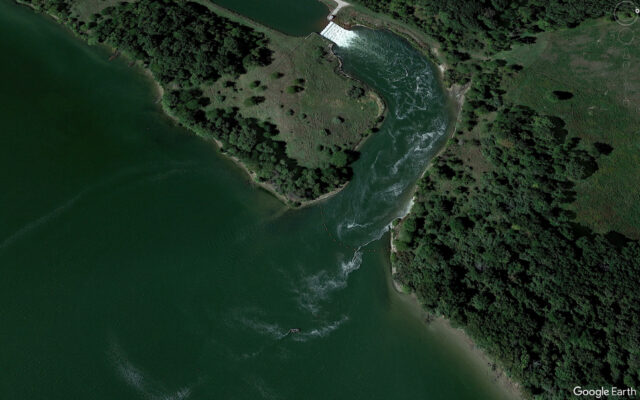
Living in Northern Illinois during late fall through spring, some of my fondest fishing experiences with friends have come from such spillways. Back in the day, Clinton Lake, Spring Lake, and Powerton Lake are few destinations I’ve visited.
Isolated and localized warm water discharges are more common to river systems. In the Chicagoland area, man-made channels such as the Cal-Sag and North Shore Channels contain numerous discharges that kick out a good number of fish. Meanwhile on the rivers, the Illinois River system and its major tributaries (Fox, Des Plaines, Chicago River) continue to produce some quality largemouths and smallmouths that you never thought could be possible for mid-winter fishing standards.
No need to wait until spring to make your first casts of the year. Access them from shore where legal, or hook up your boat. The warm water discharges from power plants and wastewater treatment plants keep the waters open and their bass surprisingly active throughout the winter months. While water temperatures could be in the 30 to 40-degree range throughout much of the system, the discharge areas could be anywhere from the mid-40’s to 60-degree range depending on their power, flow volume, and size of outflow.
Shad and minnow species stack up heavily in these locations. Bass will feed heavily, and it won’t take much to catch them. We’ve done well with swimbaits, ned rigs, finesse rigs, and live minnows.
Warm water discharges attract house-bound anglers all winter long. Check first for fishing permission and the legalities of accessing them. Use extra caution.
Channels
Several seasons ago, I began exploring the backwater channels and thoroughfares of my favorite drainage lake systems of Northern Wisconsin. What possessed me to visit these unlikely areas is my ownership of a smaller vessel with a shallow-drafting hull that allowed me to get into these protected tucked-away areas that most other boats couldn’t get into. The big largemouths I continue to find dwelling in these spots blows my mind. During the spring and summer months, I continue investing time and focus into these locations.
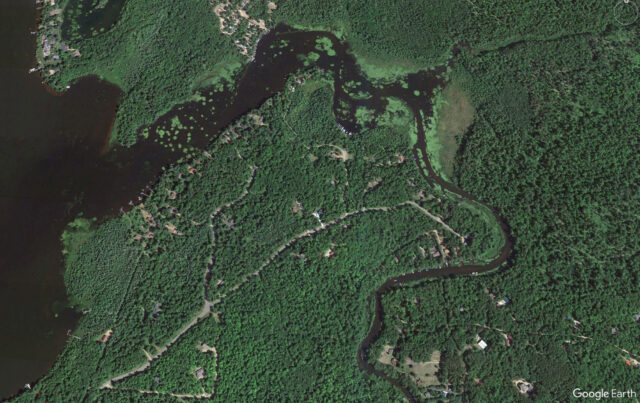
Channels are funnel areas that will attract and corral largemouths using them for passage from one water body into another. They come in natural and man-made forms, serving largemouths as points of interest and attraction, where they can be easily located and vulnerable. Funnels are defined as a narrowing of passage. As they pertain to fishing spots, their formation impedes migrations and compresses fish into confined areas. In most funnels, largemouths lie and wait in ambush for when the next feeding opportunities are presented. When I think of these areas, I want them to behave as collection sites for largemouths. A dead-end too.
Channels connecting lakes together can be the ticket to consistent fishing. The best channels are expansive enough to attract large numbers of fish where they will migrate in and out from as they wish. When largemouths pass through these systems enroute to other waters or for spawning purposes, they could keep you busy the entire day. Common habitats and sub-funnels within them could be piers and boat lifts, wood in the forms of stumps, laydowns and log jams, lily pads and other vegetation. Often, their emergent and submergent vegetation will form some of the best natural funnels that include navigational channel lanes, trails, and open pockets.
Channels and thoroughfares have no shortage of habitat, making them diverse for us to fish. Flipping and pitching with jigs, slop strategies, and surface fishing with frogs and buzzbaits are good ideas. Prioritize these locations from ice-out through mid-summer as largemouths use them heavily for spawning and feeding.
On drainage lake systems, channels are my target areas on trip days when the rest of the lake fails to produce. Look closely at the maps and satellite imagery of your favorite drainage lakes. They’re likely to contain a navigable channel worth fishing.
Trout Fisheries
We should all know what happens when trout get stocked in Western American lakes – the largemouth bass grow into huge world-record sizes as a result of feeding off of those stocked trout. Unfortunately, we don’t have this same dynamic happening in my waters up north. Largemouths simply don’t exist in these waters. But what my trout waters have growing in them instead are big smallmouths. These inland fisheries are home to both native and stocked populations of brown trout and lake trout. Unlike out west, these trout aren’t what’s feeding and growing the bass.
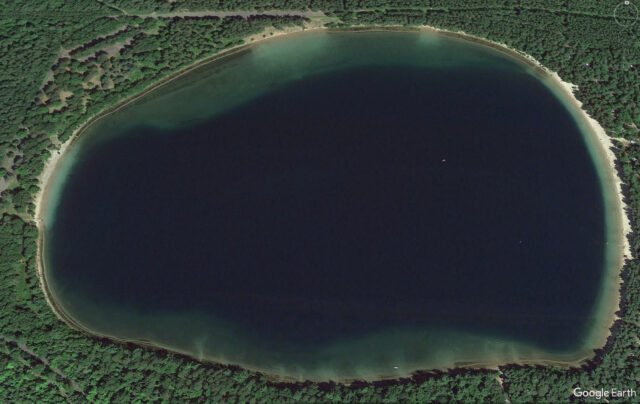
From the isolated fisheries of the Great Lakes to the inland lakes, what helps smallmouths achieve monstrous sizes on these two-story cold-water fisheries is a diverse menu of pelagic species. The cisco, smelt, and alewife forage is what sustains the trout and henceforth feeds our smallmouth bass. Their sizes, growth rates, and weights are a product of their availability and abundance. To maintain their weights, big smallmouths require a combination of these forage species.
Whether or not smallmouths prey on stocked trout like largemouths do, I’m sure a few of them get eaten additionally.
As these low-nutrient and less fertile oligotrophic waters run colder, are substantially deeper and clearer, and better-oxygenated than most typical smallmouth fisheries, a forage base of high protein in abundance coupled with their open water roaming tendencies lead smallmouths offshore where they will roam also throughout much of the season. Even though they’re eating, they still grow a little slower than normal. But they exceed the life span of smallmouths most everywhere else. Additionally, these waters will have a low population density of bass in them. If you tap into a robust 20 to 25-year-old smallmouth on these waters, it could be pushing 6 to 7-pounds.
This trout fishery / trophy smallmouth theory coincides with my standby summer season pattern of fishing the deepest, clearest, and coldest waters possible. Summer heat cannot penetrate through them as effectively and detrimentally like it does to all other lake types.
Tapping into trophies requires an understanding of a fishery’s food web and making these forage connections from point-A to B and C. If it’s got a trout fishery, just note that there must also be an abundant pelagic species sustaining it. Often, smallmouths are the secondary predator in line.
Despite inland trout fisheries being limited in number, some of the largest and heaviest inland smallmouths I’ve caught in my lifetime have come from these types of waters in Wisconsin and Michigan.
![]()
The Neighborhood Pond
No need to travel far from home for this destination.
For readers who don’t live anywhere near good fisheries requiring a boat, look no further than your local pond. It could be located somewhere in the neighborhood and subdivision, be privately owned, out on the farm, or tucked away deep in the woods and surrounded by large lakes. Ponds are everywhere!
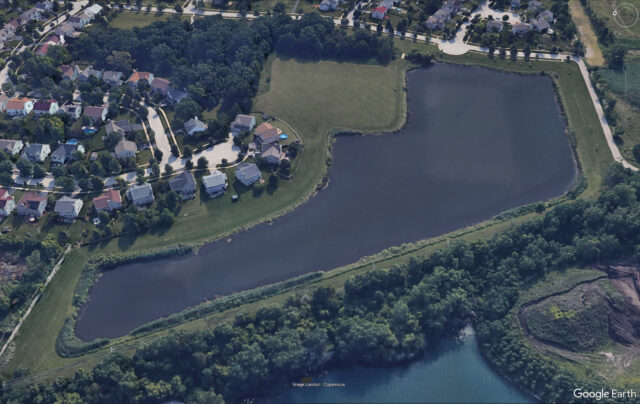
No other sport fish is found in abundance and availability like the largemouth bass is. Ponds continue to be chalk-full of them.
I’ve caught trophy largemouths in Wisconsin and Florida, and the ones residing in local ponds nearby me in Northern Illinois rival those specimens. Nowadays, I think twice about traveling far if it’s for largemouths.
Early spring, from ice-out through June month is my absolute favorite time to visit a few of them. Although the average pond doesn’t see very many anglers per week, a single angler can educate and condition several fish quickly if not selective of peak fishing times. Don’t over-do it. Find a rotation of ponds that you can visit to best avoid pressuring their big bass.
The best ponds offer submergent and emergent vegetation, moderate visibility, undeveloped shorelines, depths of 8-10 ft or more which is necessary to prevent summer-kills and winter-kills, and a high forage base and corresponding adult population of large bluegills.
Just finding the good ones with healthy largemouth populations, and access to them by landowner permission and lack of signage, are the biggest challenges I face. Whether it’s a farm pond, subdivision pond, or ditch next to the shopping center, be aware of property zoning and boundaries. Many waters are managed and maintained by homeowner associations too, so you could run into an HOA Karen or two. Trespassing or feuding with grumpy neighbors can be the consequences. To get by I rely on the ReGrid and LandGlide Apps.
Small Rivers & Tributaries
While most bass anglers travel in droves to popular destination fisheries and play bumper-boats on them, I’d much rather go to places that’ll allow me being its only angler that day.
Yes, I realize and understand that I missed other overlooked bass waters that could be your favorites. These are mine. While there are several incredible fishing destinations always making the headlines, there’s an infinity of them getting neglected and continuing to be unknown to the bass world.
Which is a very a good thing.
Andrew Ragas splits time between the Chicago area and Wisconsin’s Northwoods. Based in Minocqua, WI, he specializes in trophy bass fishing and offers guided trips from May thru October. While big bass is the passion, he dabbles in multi-species as well. He may be visited online at www.northwoodsbass.com


